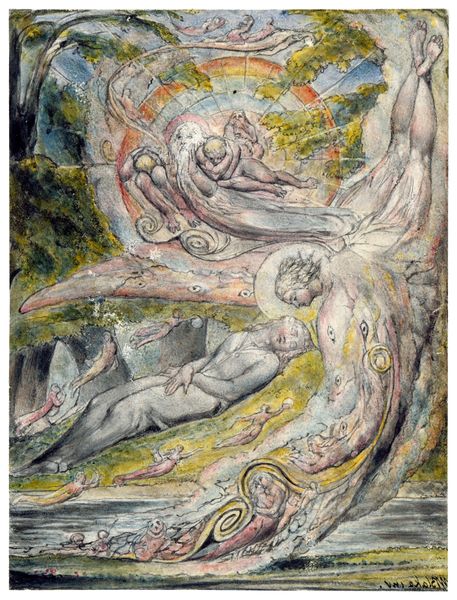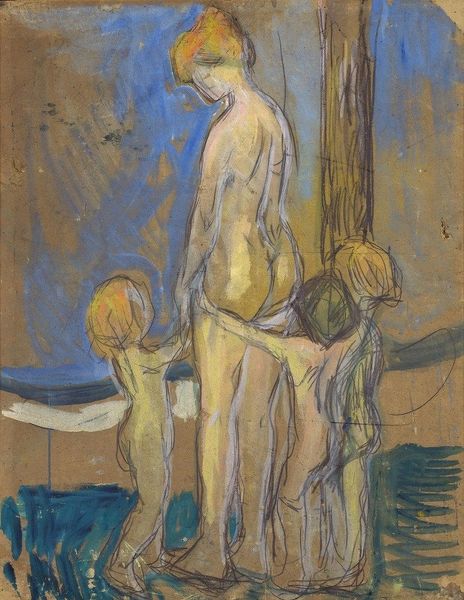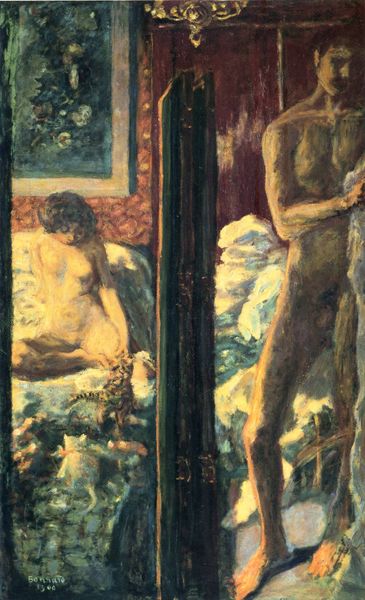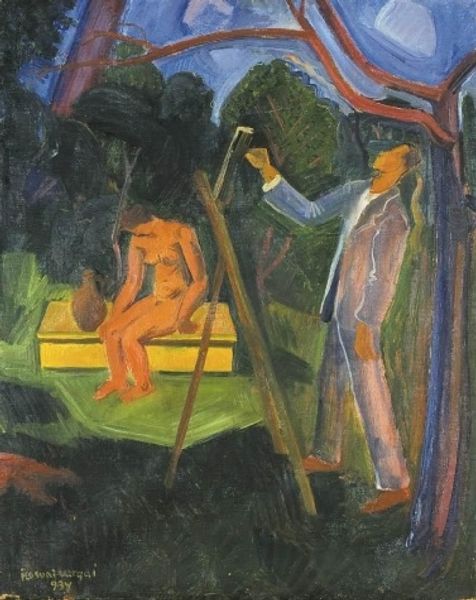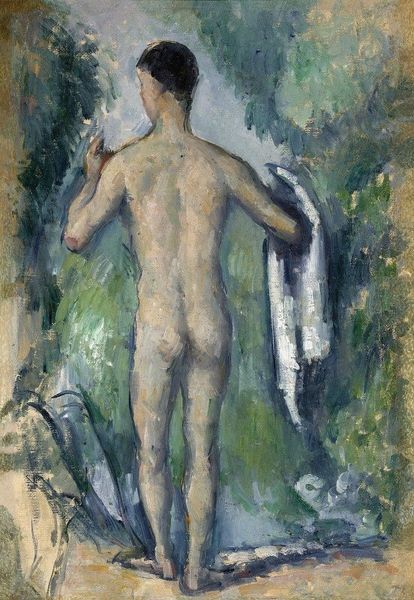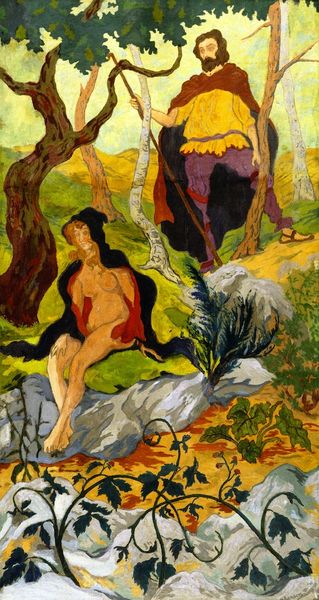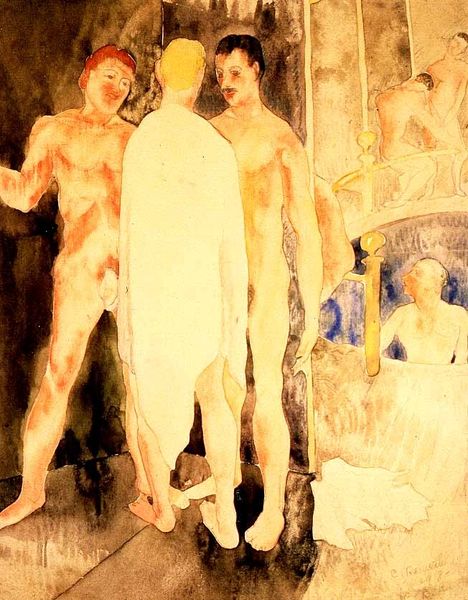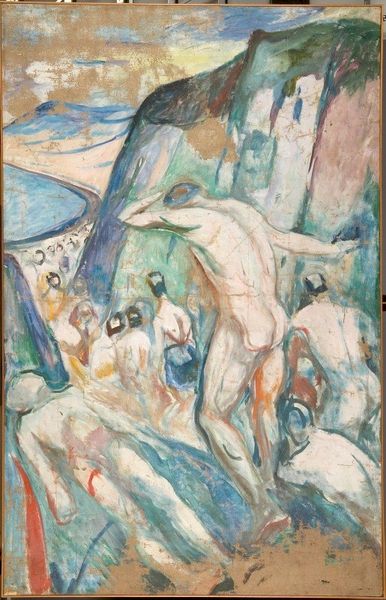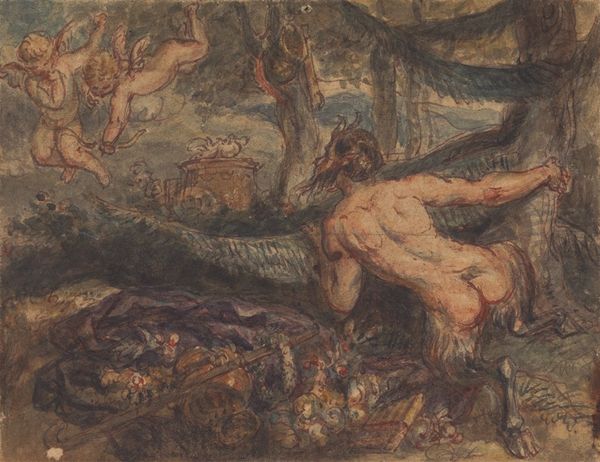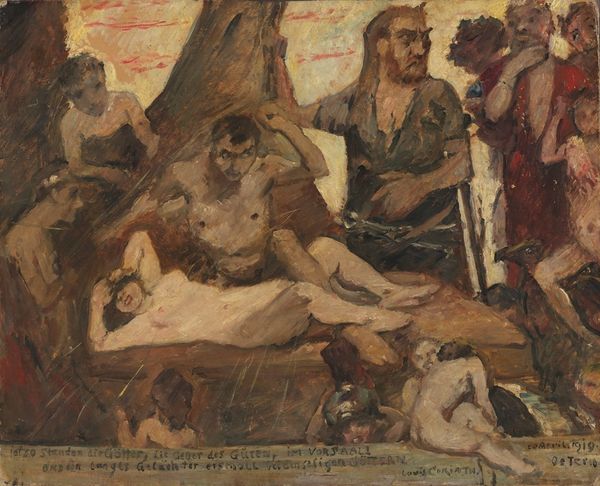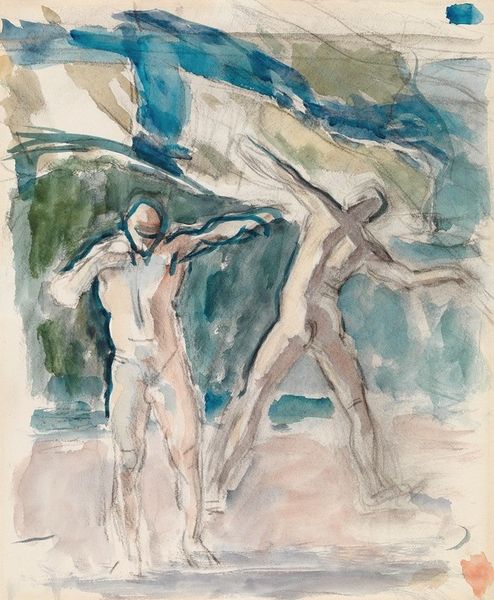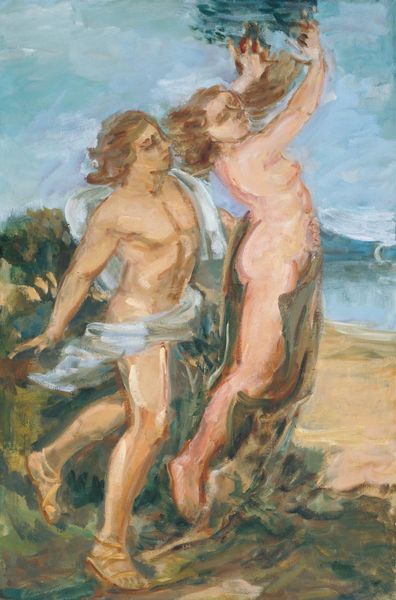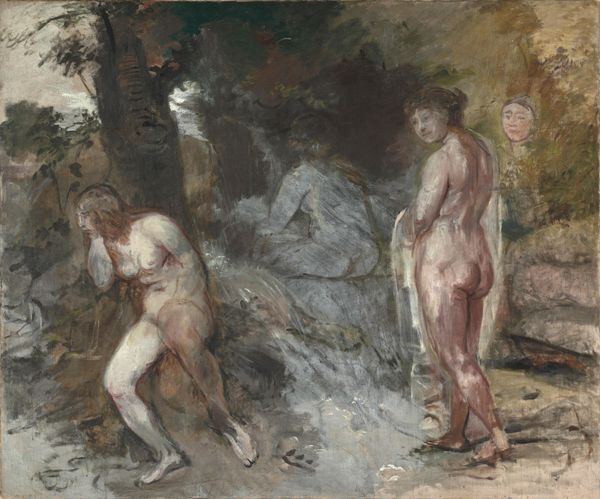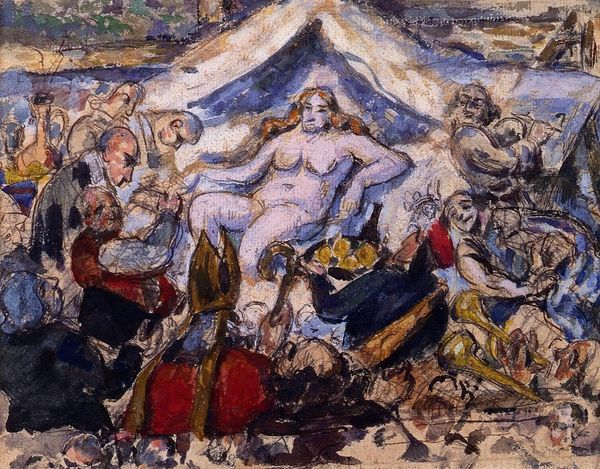
Copyright: Public Domain: Artvee
Magnus Enckell made this sketch, Bird of Paradise, at an unknown date with watercolor and graphite. It presents a landscape with figures in an open, unfinished manner. The use of the bird of paradise motif and groupings of nudes could connect to the cultural context of the early 20th century, where artists were exploring themes of nature, sexuality, and spirituality in response to industrialization and societal changes. Enckell, a Finnish symbolist painter, employs loose brushwork and delicate washes of color to create a dreamlike atmosphere. The subject matter, with its allusions to paradise and human figures in a natural setting, references classical and biblical imagery, but its execution reflects a modern sensibility. Finland at this time was undergoing a period of national awakening and artistic exploration. We can also reflect on the institutional history of art education and exhibition practices that shaped artists like Enckell. Was the sketch conservative or progressive for its time? To understand it better, we would need to examine Enckell's other works, and the writings of art critics and cultural commentators of the period. Only then can we appreciate the artwork's meaning as something contingent on its social and institutional context.
Comments
No comments
Be the first to comment and join the conversation on the ultimate creative platform.
